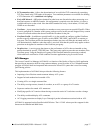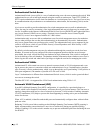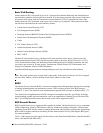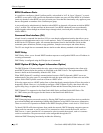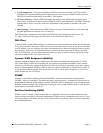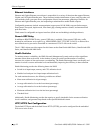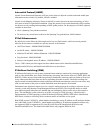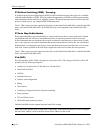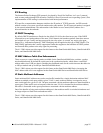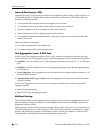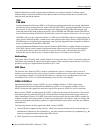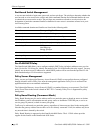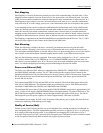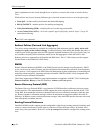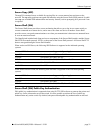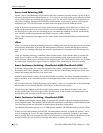
Software Supported
OmniSwitch 6800/6850/9000—Release 6.1.3.R01 page 25
IPX Routing
The Internet Packet Exchange (IPX) protocol, developed by Novell for NetWare, is a Layer 3 protocol
used to route packets through IPX networks. (NetWare is Novell’s network server operating system.) This
implementation of IPX routing is software based with limited performance.
IPX specifies a connectionless datagram similar to the IP packet of TCP/IP networks. An IPX network
address consists of two parts: a network number and a node number. The IPX network number is assigned
by the network administrator. The node number is the Media Access Control (MAC) address for a
network interface in the end node.
L2 DHCP Snooping
By default, DHCP broadcasts are flooded on the default VLAN for the client/server port. If the DHCP
client and server are both members of the same VLAN domain, the broadcast packets from these sources
are bridged as Layer 2 traffic and not processed by the relay agent. As a result, any active relay agent
features (e.g., information Option-82, DHCP Snooping) are not applied to this type of DHCP traffic. The
DHCP Relay application has a traffic suppression feature that suppresses the broadcast of DHCP packets
and forwards these packets to the relay agent for processing.
The 6.1.3.R01 release provides support for this feature on the OmniSwitch 6800 Series, OmniSwitch 6850
Series, and OmniSwitch 9000 Series.
L2 MAC Address Table Size Enhancement
There are now two source learning modes available for the OmniSwitch 9000 Series switches: synchro-
nized and distributed. By default the switch runs in the synchronized mode, which allows a total MAC
address tables size of 16K per chassis. Enabling the distributed mode for the switch increases the table size
to 16K per module and up to 64K per OmniSwitch 9000 chassis.
The 6.1.3.R01 release provides support for this feature on the OmniSwitch 9000 Series; increasing the
MAC address table size is not supported on the OmniSwitch 6800 Series and OmniSwitch 6850 Series.
L2 Static Multicast Addresses
Static multicast MAC addresses are used to send traffic intended for a single destination multicast MAC
address to multiple switch ports within a given VLAN. A static multicast address is assigned to one or
more switch ports for a given VLAN. The ports associated with the multicast address are then identified as
egress ports. When traffic received on ports within the same VLAN is destined for the multicast address,
the traffic is forwarded on the egress ports that are associated with the multicast address.
One of the benefits of using static multicast addresses is that multicast traffic is switched in hardware and
no longer subject to flood limits on broadcast traffic.
The 6.1.3.R01 release provides support for this feature on the OmniSwitch 6800 Series, OmniSwitch 6850
Series, and OmniSwitch 9000 Series.



